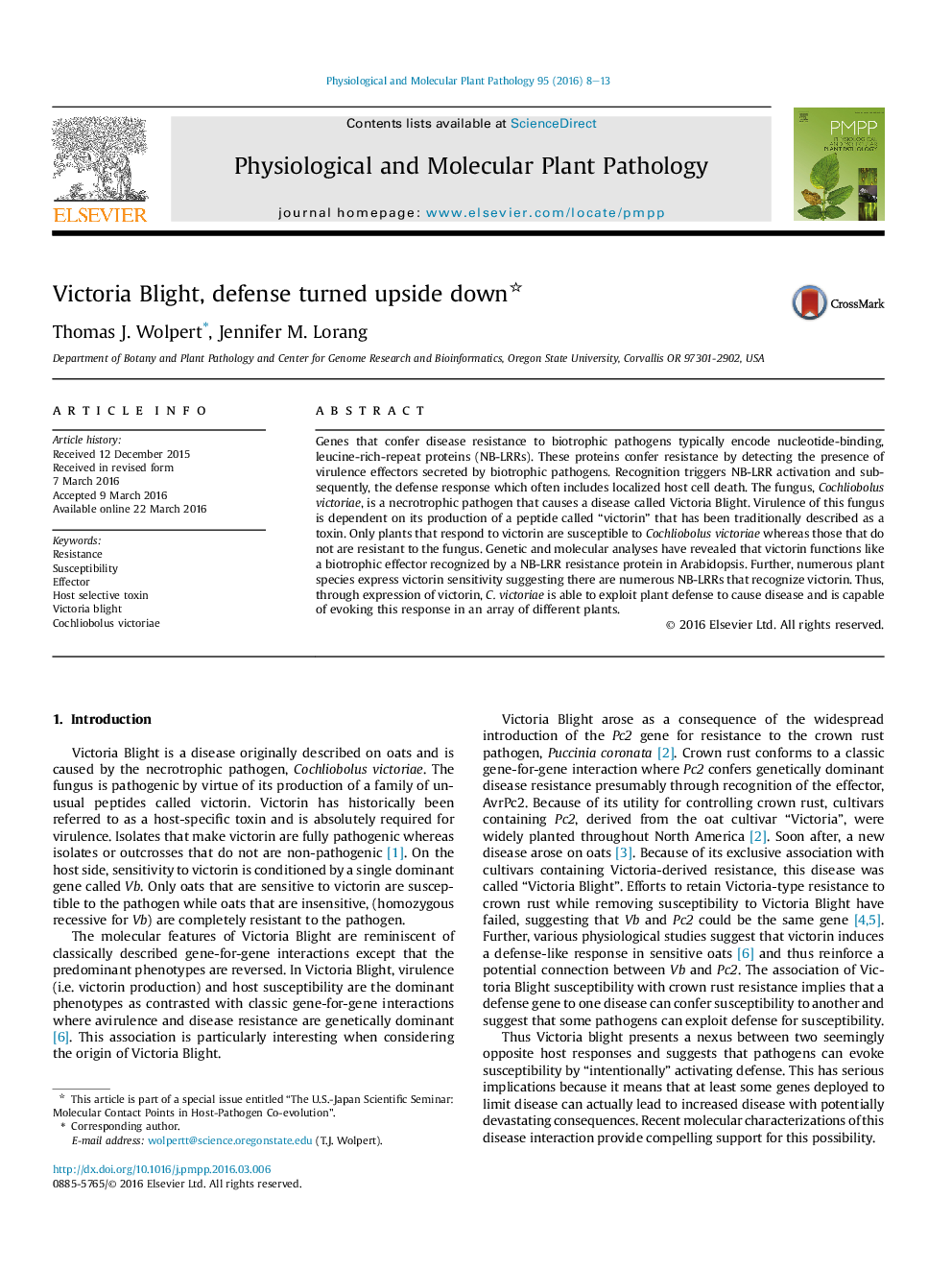| کد مقاله | کد نشریه | سال انتشار | مقاله انگلیسی | نسخه تمام متن |
|---|---|---|---|---|
| 2836171 | 1570844 | 2016 | 6 صفحه PDF | دانلود رایگان |
Genes that confer disease resistance to biotrophic pathogens typically encode nucleotide-binding, leucine-rich-repeat proteins (NB-LRRs). These proteins confer resistance by detecting the presence of virulence effectors secreted by biotrophic pathogens. Recognition triggers NB-LRR activation and subsequently, the defense response which often includes localized host cell death. The fungus, Cochliobolus victoriae, is a necrotrophic pathogen that causes a disease called Victoria Blight. Virulence of this fungus is dependent on its production of a peptide called “victorin” that has been traditionally described as a toxin. Only plants that respond to victorin are susceptible to Cochliobolus victoriae whereas those that do not are resistant to the fungus. Genetic and molecular analyses have revealed that victorin functions like a biotrophic effector recognized by a NB-LRR resistance protein in Arabidopsis. Further, numerous plant species express victorin sensitivity suggesting there are numerous NB-LRRs that recognize victorin. Thus, through expression of victorin, C. victoriae is able to exploit plant defense to cause disease and is capable of evoking this response in an array of different plants.
Journal: Physiological and Molecular Plant Pathology - Volume 95, July 2016, Pages 8–13
